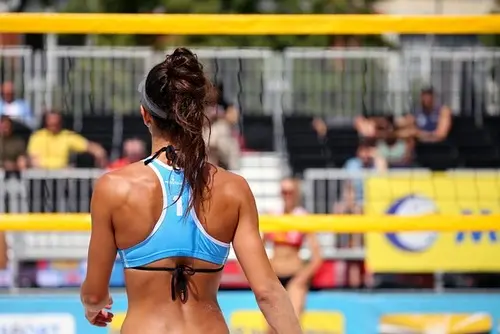Key Milestones in Volleyball History

Significant Events that Shaped the Sport
Volleyball, a popular and dynamic sport enjoyed worldwide, has a rich history marked by significant milestones that shaped it into the competitive, high energy game it is today.
From its creation in a small YMCA gymnasium in Massachusetts to becoming a global Olympic sport, volleyball’s evolution is an inspiring story of growth, innovation and cultural expansion. Here, we’ll explore some of the key milestones in volleyball history, from its early days in the 19th century to recent advancements.
The Creation of Volleyball (1895)
Volleyball was invented in 1895 by William G. Morgan, a physical education instructor at the YMCA in Holyoke, Massachusetts. Inspired by the popular but more intense game of basketball (invented only four years earlier), Morgan wanted to create a new sport that combined elements of basketball, baseball, tennis and handball but was less physically demanding.
Originally called “Mintonette,” the game was designed for older men to enjoy without the high impact physicality of basketball. This invention marked the birth of volleyball, a sport that would grow far beyond Morgan’s initial vision.
First Rules and Name Change (1896)
The first formal rules of volleyball were established in 1896 at the YMCA Training School in Springfield, Massachusetts, where Morgan introduced Mintonette to a group of YMCA directors. Dr. Alfred T. Halstead, one of the observers, suggested the name “volleyball” after noticing the volleying nature of the game.
This name change and the establishment of a formal rule set provided a clear foundation for the sport to grow.
The Spread of Volleyball Internationally (1900s)
As the game gained popularity in the United States, it quickly spread internationally. By the early 1900s, YMCA missionaries and military personnel introduced volleyball to various countries, including Canada, Cuba and the Philippines.
The game’s easy setup and low equipment cost made it accessible for people around the world, contributing to its rapid adoption. The Philippines, in particular, became an important site for volleyball’s development; it was there that players invented the “set” and “spike,” adding new dimensions to the game and shaping it into a more competitive sport.
The Birth of Beach Volleyball (1920s)
The 1920s saw the emergence of beach volleyball in Santa Monica, California. While it started as a casual, recreational activity, beach volleyball eventually developed into a popular competitive sport in its own right. By the 1930s, formal tournaments were being held in California and the sport gained a distinct identity separate from indoor volleyball.
This innovation opened up new possibilities for volleyball’s future and beach volleyball would later become a staple in global competitions.
Formation of the FIVB (1947)
One of the most important milestones in volleyball history was the formation of the Fédération Internationale de Volleyball (FIVB) in 1947. The FIVB became the official governing body for volleyball and set out to establish standardized rules, organize international competitions and promote the sport worldwide.
This event marked a new era of global cooperation and formalization, helping to bring structure to the rapidly growing sport.
First Men’s and Women’s World Championships (1949 and 1952)
In 1949, the FIVB organized the first Men’s World Volleyball Championship in Prague, Czechoslovakia. This historic event showcased the top volleyball teams from around the world, establishing a competitive standard for international play.
Following this, the first Women’s World Volleyball Championship took place in 1952 in Moscow, further promoting women’s participation in the sport. These events helped volleyball gain international recognition and legitimacy as a major competitive sport.
Volleyball’s Inclusion in the Olympics (1964)
One of the biggest milestones for volleyball came in 1964 when the sport was included in the Olympic Games in Tokyo. Both men’s and women’s indoor volleyball were added as official Olympic events, instantly increasing the sport’s visibility and prestige.
This Olympic debut significantly boosted volleyball’s global popularity, inspiring new fans and aspiring athletes around the world. Volleyball has since become a staple of the Summer Olympics, with some of the most exciting moments in Olympic history occurring on the volleyball court.
The Rise of Beach Volleyball and Olympic Inclusion (1996)
Beach volleyball took the global stage in 1996 when it became an official Olympic sport at the Atlanta Games. With only two players per side, beach volleyball is faster paced and often more physically demanding than its indoor counterpart. The sport’s inclusion in the Olympics reflected the growing popularity of beach volleyball and helped it attract a wider audience.
Olympic beach volleyball has since become one of the most popular events, known for its unique mix of athleticism, strategy and beach culture.

Technological Advancements: The Libero and Rally Scoring (1998-2000)
In the late 1990s and early 2000s, volleyball underwent several rule changes to make the game more exciting and viewer friendly. In 1998, the FIVB introduced the “libero” position, a defensive specialist who wears a different colored jersey and can substitute freely without formal rotations. The addition of the libero brought a new strategic element to the game, focusing on defense and extending rallies.
In 2000, the FIVB implemented rally scoring, which awarded a point on every serve, regardless of which team served. This change replaced the older side out scoring system and helped speed up matches while keeping them more competitive and viewer friendly. Both of these changes had a lasting impact on the sport’s strategy and pace, making it more accessible to casual fans and spectators.
The FIVB Volleyball Nations League (2018)
In 2018, the FIVB launched the Volleyball Nations League (VNL), a new annual competition featuring the world’s top volleyball teams. Designed to increase fan engagement and visibility, the VNL combines both men’s and women’s competitions and takes place over several weeks, with matches played in different countries.
The VNL has provided more regular, high stakes international volleyball and allowed fans worldwide to connect with the sport. This annual event has elevated volleyball’s status and showcases the best talent on a global stage.
Growth in Professional Leagues and Popularity
Professional volleyball leagues have continued to grow worldwide, with leagues in countries like Italy, Brazil and Japan boasting passionate fan bases and high levels of talent. Many top players now compete in international leagues, helping to promote volleyball as a viable professional sport with lucrative opportunities.
Media coverage, streaming services and social media have also contributed to volleyball’s increased visibility, allowing fans from all corners of the globe to follow their favorite players and teams.
The Role of Volleyball in Promoting Inclusivity and Diversity
Volleyball has been a leader in promoting inclusivity, particularly through its mixed gender recreational leagues and tournaments. Additionally, the FIVB and various volleyball organizations have taken active steps to promote gender equality and fair representation in both men’s and women’s competitions.
Beach volleyball’s relaxed attire policies, for instance, have been updated to allow athletes more choice in what they wear, promoting comfort and respecting cultural norms. Volleyball’s adaptability has made it a sport for everyone, regardless of age, skill level, or gender.
Conclusion
From a modest beginning in a Massachusetts gymnasium to becoming one of the most watched sports in the world, volleyball has undergone remarkable transformation and growth. Key milestones like the establishment of the FIVB, inclusion in the Olympics and the popularization of beach volleyball have played pivotal roles in the sport’s development.
Today, volleyball continues to evolve, with advances in technology, changing rules and a commitment to inclusivity, ensuring its place in the hearts of athletes and fans worldwide for generations to come.


